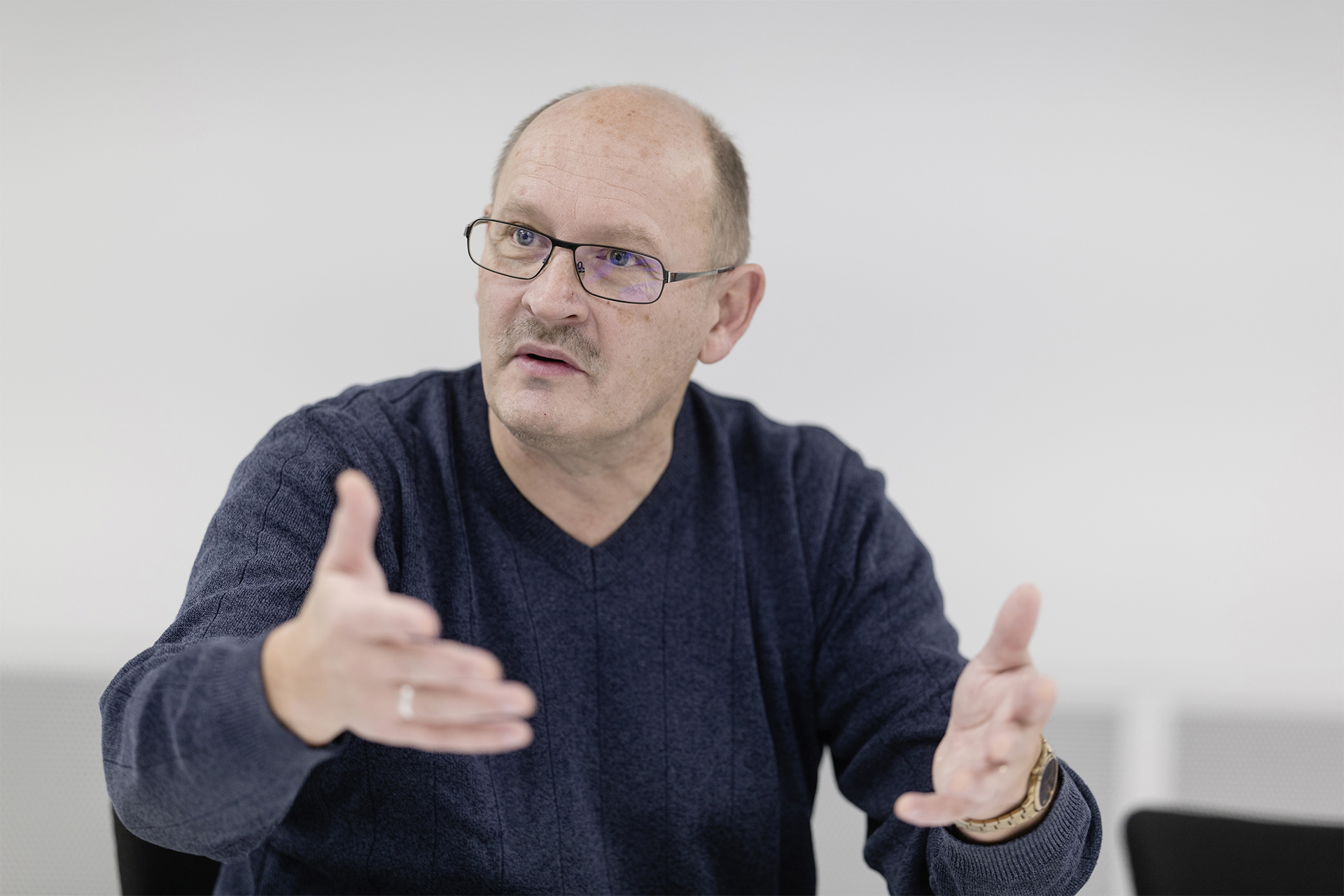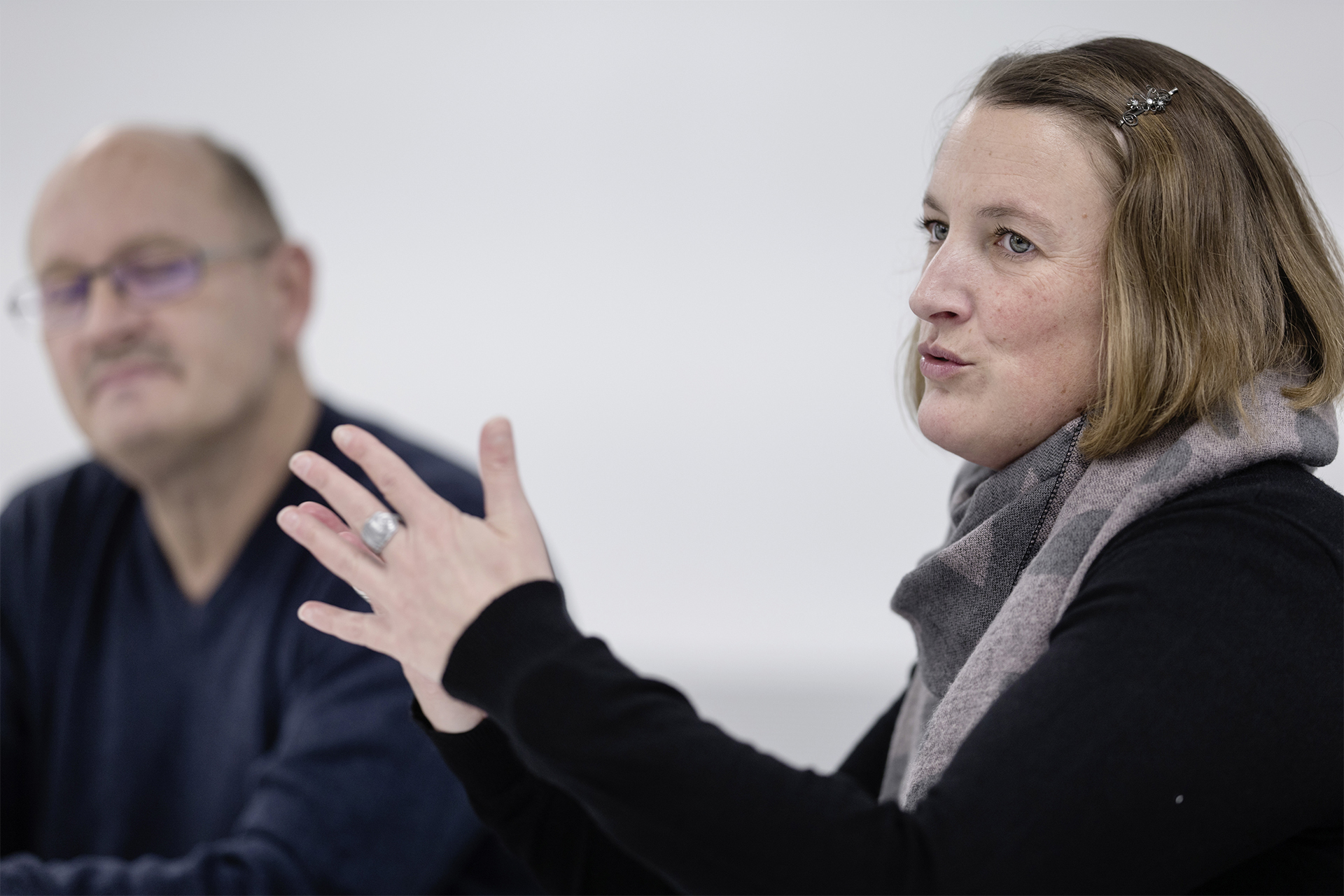Investigated
When an app counts as a medical device It’s the manufacturer’s responsibility
The growing internet connectivity of medical devices poses a challenge not just for Swissmedic but also, and more particularly, for manufacturers and users. Visible analysed the current market situation with specialists Rudolf Wälti, Einat Schmutz, Evelyn Aeschlimann and Sveva Crivelli from Swissmedic’s own expertise pool.
(Not) a medical device
In a single sentence: A medical device (MD) may be designated as such if it fulfils a medical purpose and is not a medicinal product. “An MD is intended for people who are ill, with the exception of MDs intended to prevent diseases”, explains Rudolf Wälti, a member of the scientific staff at Swissmedic. “The same applies to medical device software. It can be used on its own or in combination with another product.” The medical purpose is stipulated in the instructions for use and describes the intended medical use of the device.
Issues
On first sight, then, the situation is clear. But the example of the contact tracing app shows how difficult the whole field is: “The Federal Office of Public Health, (FOPH), asked us before the launch whether the app counted as medical device software. We discussed the question intensively and ultimately declared it to be MD software. But even within the European market, not everyone felt the same way”, Rudolf Wälti recalls. “The starting point is always the intended purpose of the product, software or app. The classification and qualification determine how it can subsequently be brought onto the market”, adds his colleague Evelyn Aeschlimann. The following examples illustrate the complexity of the subject. A pregnancy test is an MD because, purely in legal terms, it has a medical character. “And this is despite the fact that it has nothing to do with a disease”, says Einat Schmutz. Wellness products are the category that is most difficult to delimit. “Here it depends on the exact intended purpose stated by the manufacturer. They decide whether a product has a medical purpose or not”, adds Rudolf Wälti. In contrast to a smart watch with an inbuilt ECG function, a step counter with no medical intended purpose is not an MD. And a diet app that can be used to assess photographed food on the basis of calorie information is also not an MD.
Responsibility
As the supervisory authority, Swissmedic monitors the safety and efficacy of more than 500,000 MDs – including MD software items – on the basis of reports, for example. “The manufacturer is responsible for qualifying and classifying products, including software, in all cases”, emphasises Evelyn Aeschlimann, adding, “As the supervisory authority, Swissmedic has a clear legal mandate. Questions regarding product development or market access are covered by other bodies, such as consultancies.” Another aspect is that MDs do not have to be authorised by the supervisory authority. This is the sole responsibility of the manufacturers, and depending on their classification, the devices undergo conformity assessment procedures.
The decision-makers
The manufacturers are responsible for their own MDs and thus for MD software. They are responsible for ensuring that their products are in conformity. “At Swissmedic, we mainly act in response to signals. This means that when our attention is drawn to an incident, we take action as a supervisory authority”, explains Sveva Crivelli. “We receive very few reports from patients. “Most lay users don’t even know whether they’re using an MD”, she continues. “After we receive a report, we analyse the risks associated with the incident and implement measures as necessary to ensure that the MD or MD software is placed on the market in accordance with its intended use”, Evelyn Aeschlimann adds. One of the most important things for the manufacturer is therefore determining early on whether their product is an MD or MD software. “Depending on the intended purpose, if a product is wrongly not declared as an MD, it is not in conformity and must therefore be taken off the market”, she says. “If a company brings a new product onto the market and it does not comply with the standards, they may have to start all over again. For the manufacturer this can mean that the launch of their product is delayed for months or even years.”
The app jungle
Every manufacturer must comply with the standards applicable to their devices. There are over 500,000 MDs, including MD software items, in Switzerland alone. “The market is simply too big to monitor all apps.” The authorities in Europe have only a limited overview of the apps that are placed on the market. “We assume that MD apps that are not identified as such or have not been tested and therefore are not in conformity are being offered on various platforms. They have probably not been registered by any of the authorities in Europe for this reason”, is Evelyn Aeschlimann’s analysis of the situation. “However, the effort involved in systematic monitoring of MD apps would be out of all proportion to the benefit. But in this case, too, we can react to reports of health impairment caused by apps.” Furthermore, it would be difficult to enforce a Swiss ban on the placement of apps on the market because users can download them from platforms in other countries.




Improper use of apps
“We follow up all reports of suspected improper use of apps as part of our market surveillance activities”, explains Sveva Crivelli, although incidents or cases in which improperly used apps are reported to Swissmedic are very rare. Just a few of the 5,000 or so incidents involving MDs that are reported every year are due to apps. “The problem is that many producers of apps are simply not aware that the product they are developing and distributing could be considered to be an MD.”
The answers
As the supervisory authority, we receive many enquiries every year. In fact most of these enquiries are about qualification and classification or mandatory notification, for example if a manufacturer is not sure how to classify their research project. Or questions relating to development and validation, placing software on the market, cybersecurity or data security and language requirements for user interfaces.
Artificial intelligence
Artificial intelligence (AI) is being used in a growing number of MDs, for example to diagnose diseases more accurately or to treat patients more effectively. Einat Schmutz believes that AI is taking on a significant role in MDs: “It’s another tool in the development of an MD that is becoming increasingly common – and that makes sense because medicine is a field in which a considerable amount of data is generated.” Schmutz is convinced that data can be very useful in the development of an MD if they are used intelligently. And Rudolf Wälti adds: “The EU is in the process of regulating many aspects of AI, but the whole field is still a work in progress. As yet there is little information on the definition of AI that we can use as a basis.”
Internal expertise pool
The MD software expertise pool is made up of members from different Divisions at Swissmedic and meets every two weeks to discuss, amongst other things, enquiries that have been received. “The most important items for discussion are the plausibility checks that are part of the qualification and classification process – especially those involving notifications of Class I MD apps”, Einat Schmutz explains. “We also produce guidelines and information sheets and discuss questions relating to topics such as AI, cybersecurity or the legal role of app stores.” The overall aim is for the end result to be consistent. And to achieve even greater clarity as to whether software is MD software and how it should be classified under the regulations.